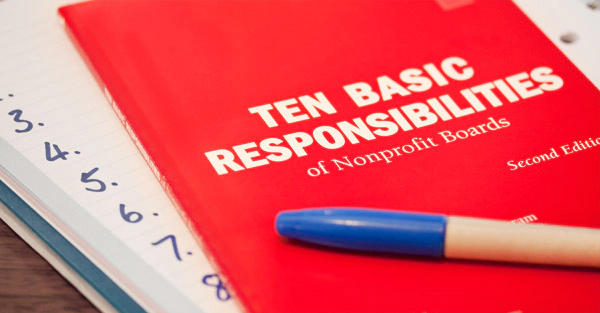board-dynamics
Dealing with Unspoken Issues at Board Level – Part 1
Published: August 20, 2012
Read Time: 8 minutes

Q: How to do you know when you have passed an elephant?
A: You cannot get the toilet seat back down. (Anon children’s joke)
At the Better Boards Conference my presentation focussed on dealing with unspoken issues at the board level. Everyone was asked to identify if they had unspoken issues. An overwhelming majority said they definitely had unspoken issues that weakened the board and the remainder thought that they might have them.**
Unspoken issues both undermine leadership and reflect a lack of transparency. If, as this ad hoc sample suggests, every board has unspoken issues then “Houston, we have a problem”.
Why then are we apparently so bad at dealing with the issue? Well if it is “unspoken” it may be that we choose to believe it is also “unseen”. It may be that being “unspoken” also becomes an excuse to ignore the issue. We might convince ourselves that really it is the responsibility of others; “If they are concerned enough then they will raise it”.
An essential element of leadership is courage. It takes courage to raise the unspoken. The fact so many came and raised concerns at the conference is fantastic and demonstrates that not only do most boards believe they have unspoken issues but actually they also have the courage and desire to do something about it. Certainly everyone left each session committed to engaging their “unspoken issue”.
Whilst there were a variety of unspoken issues four themes recurred most frequently. The themes outlined below may be helpful for your board to reflect upon in your next courageous moment. In the second article in this series I will outline some tactics for avoiding unspoken issues in your organisation.
1. Who is in Control? Creating the Team.
This issue was raised by CEOs and Chairs alike. There seemed to be an unspoken competition for control in the boardroom between board and management.
Actually this should not be an issue because the answer is all of us share control. The Board and Management are THE team leading the mission of the organisation. The biblical imperative to the Church is that we are “the body” and we need to all work together. The “eye” is not more important than the “hand”. The whole “body” is indeed greater than the sum of its parts. So too the board is not more important than management and vice versa. The whole team is greater than the sum of parts.
Experience suggests issues of “who is really in control” arise when management and board are sitting at different points on the strategy continuum. Indeed this was confirmed in the workshop where different understandings of how strategy and planning should be done emerged. The differences were often compounded by the lack of agreed boundaries between governance and management.
A useful discussion to regularly have at the board level is; “where do we, as an organisation, want to sit on the strategy continuum outlined below?” I am indebted to Duncan Peppercorn at Social Ventures Australia and David White of Zentricity for the continuum.
Where do you see the Board sitting on the strategy continuum?
A. Board develops strategy
B. Board develops strategy with management’s input and assistance
C. Board and management jointly develop strategy
D. Board provides clear inputs and parameters, management develops strategy, Board approves
E. Board has Input into and final approval of management’s development of corporate strategy
F. Management develops strategy, Board approves
The beauty of the above continuum is that there is no right answer. Indeed every point on the continuum described above is both functional and effective. What is dysfunctional is if team members act at different points on the continuum.
To discuss where we believe we should operate on the continuum should be an annual exercise and part of the induction of every new board member. Again, there is no one best or right answer. Indeed we may want to sit at different points at different stages in our development cycle. Larger organisations will sit at different points to smaller organisations. You may sit on various boards and be at different points on each board. The critical issue is that as a team we must consciously agree upon the one point we believe suits us best at the moment. It is also wise to then be equally clear on everyone’s role in implementing strategy.
This should be a positive discussion. If people are acting from widely differing positions, have the courage to ask why we believe in the different points. Remember each point on the continuum is operational and functional. No one point is necessarily better than another, therefore it is easier to have a constructive discussion. Explore each other’s reasoning.
Discussing the above continuum also often helps to clarify boundaries, issues of operational style, and flushes differing senses of the vision and mission. It is a rich and important discussion.
2. What the founders really wanted. Agreeing on the Vision and Mission.
Everyone knows that high performing teams have a common vision. Without such commonality, trust would be almost impossible. Yet a concern that our board might not actually share the organisation’s vision and mission was the most frequent unspoken issue in the workshops.
The frequency with which this particular issue was raised is at odds with my experience of organisational planning. When consulting to organisations I have been invariably briefed that “we do not want to revisit the vision and mission, we know this!” Yet so many participants were not sure on the day.
Perhaps it is our reluctance to do a regular health check on our understanding of our vision and mission that leads to this becoming an unspoken issue.
There was concern that perhaps we were not doing what our founders would have wanted. “People on the board sit quietly when we suggest new programmes that may differ from what we have traditionally done”. Again this implies a lack of discussion as to what our vision for today is.
Our world is constantly changing and therefore our own organisation’s relevance is being constantly challenged. We are seeing big successful corporations disappear as their product is no longer required, Kodak for example, or as social values change. We should not believe that our organisation is immune from such challenges. The disability sector, for example, is about to be radically reinvented.
Organisations can and do reinvent themselves. There is an oft quoted story about an English society established to provide drinking troughs for horses and how they are now irrelevant. The reality is that the organisation is now involved in creating drinking wells in the developing world. What a wonderful evolution of their purpose!
Again, there should be an annual discussion on what our vision means today, as the world has changed around us in the past year. Such discussions should also involve any parent body or other stakeholders. A discussion of the current interpretation of the vision should be part of any new board members’ induction and not simply be assumed
3. Are they up to it? Responding to Underperformance.
Every session had organisations raising this as an unspoken issue. As underperformance is a common topic of articles I will not dwell on the many proffered solutions. Simply, courage is required here. Sports teams have to pick the strongest side and so too does the board. When boards ignore underperformance they send poor messages to management. Develop agreed board performance measures and regularly review performance against these agreed measures. External support, such as a consultant, often aids in a more objective review process. Have the courage to act on the review.
4. Do they trust me? Asking the hard questions constructively.
Many workshop participants, both Chairs and CEOs declared that they felt there was a lack of trust. In exploring each person’s experience it usually came down to the method of questioning. A board member is required to courageously persist in asking questions to ensure the soundness of the logic behind a decision. However such questioning should not be a process of catching people out but a process of support.
As a therapist, I learned that families inevitably got caught up in their own system and could not see the forest for the trees. So too, the therapist could become caught in the families view of the world and get “stuck in the forest”. My clinical supervisor stayed in the helicopter to help me see the forest. The board is supposed to stay in the helicopter to help management see the forest. The board style of questioning should reflect this. Questions about individual trees will not help.
The unspoken feelings expressed appeared mainly to arise from the style and manner of questioning. Always ask questions in a respectful way recognising that each plan, each project, each idea is offered with the intent of achieving the vision. If this is not clear then perhaps we have different understandings of the vision.
Conclusion
The conference made me reflect on the unspoken issues the boards I had been involved with. I was chided by my own lack of courage to challenge them. The weekend gave me new energy to ask difficult questions with the knowledge that through discussing such questions a better board would emerge. In the second installment of this article, we will identify useful tactics to prevent unspoken issues developing in the first place.
Read part two of this article.
Share this Article
Recommended Reading
Recommended Viewing
Author
-
Make-A-Wish Australia
Past Chief Executive Officer
- About
-
Gerard was previously CEO of Make-A-Wish Australia. Prior to this appointment Gerard led some of Australia’s largest NFPs including Vision Australia. He has served on many government and industry bodies. He was AIM Professional Manager of the Year (Qld) 2001 and PM’s Employer of the Year 2006. Gerard chairs the National Roundtable of Nonprofit Organisations and Corporate and Governance Committee, Vision 2020.
Found this article useful or informative?
Join 5,000+ not-for-profit & for-purpose directors receiving the latest insights on governance and leadership.
Receive a free e-book on improving your board decisions when you subscribe.
Unsubscribe anytime. We care about your privacy - read our Privacy Policy .







